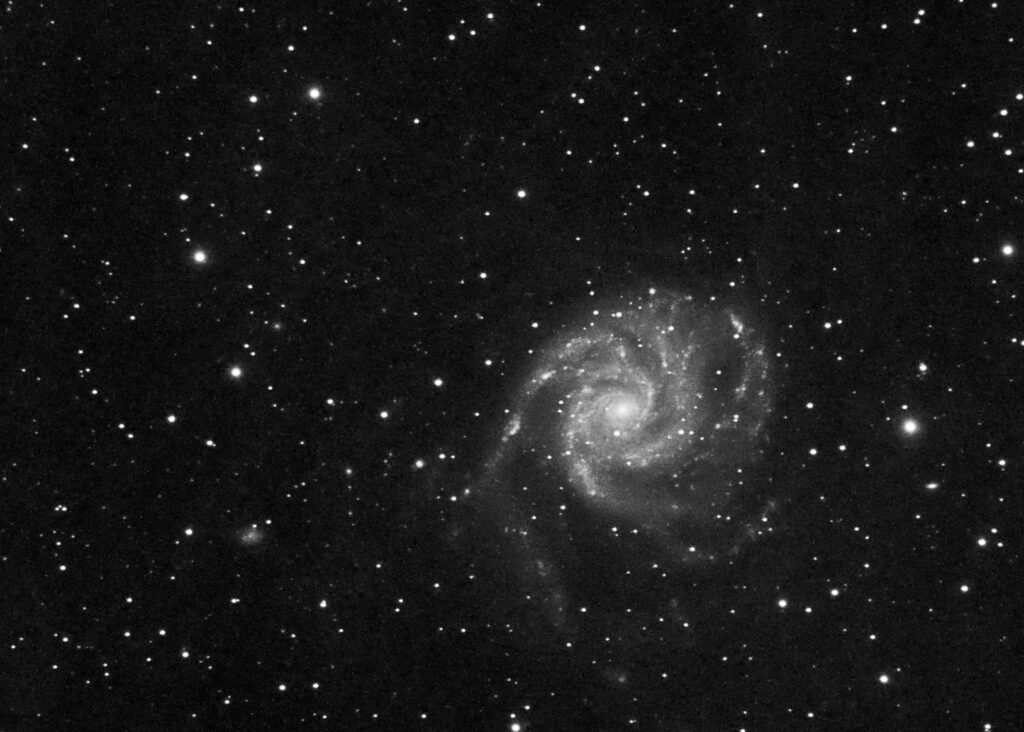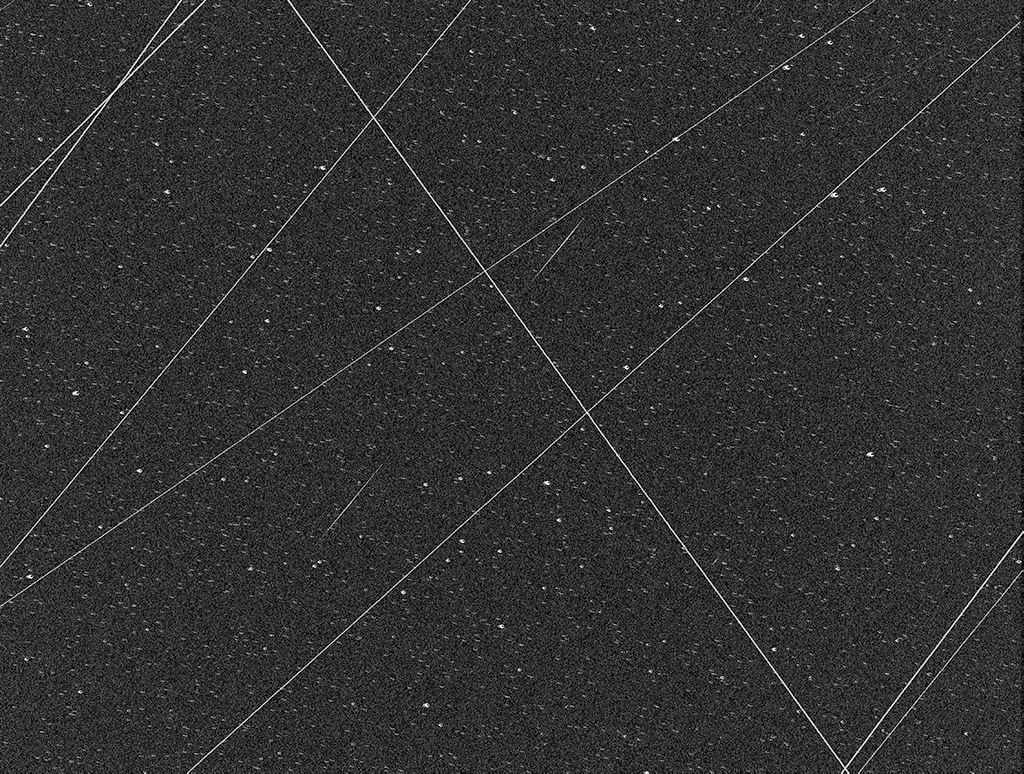
Session Data
- Date: 31/03/2020
- Time: 21:50 – 22:45 UT
- Seeing: II Mostly Stable,
- Transparency: Mostly Clear,
- Temp:3.1C,
- Air Pressure: 1028mb,
- Humidity: 75%,
- Dew Point: 0C,
- Wind Speed: 8mph
Scope: TMB 80mm APO Refractor at f/4.8 Camera: ZWO ASI 1600MM Pro, No filter, Dark subtracted, No Flats.
I guess I’m safe to say that this is the first true first light image for the new camera setup. Clear skies, a bit of a breeze and a 7 days old Moon.
I shot a total of 60 x 30 second subs, but by the time the time the rejects had been removed I had a total of 18 minutes worth. The first image is the whole full frame and the second below is a 100% crop showing just the subject.

I’m now beginning to appreciate just how much better these new CMOS sensors are and how rusty my astro imaging skills have become after a layoff of more than a decade. The last time I shot this subject was in 2006 with my SBIG2000XM camera. Then I got less detail and had to shoot 180 minutes worth of it even to come close. The wind is a little higher than I would like and I’m still getting to grips with PHD, although at only 30 seconds, the mount is quite capable of being unassisted.
Even without flats these images just don’t seem to show much in the way of vignetting and before I subtracted the darks, the individual subs were remarkably noise free.
I fitted the Televue focal reducer and this seems to have helped the star shapes at the edge of the field.

One final observation. Just look at PI’s pixel reject file containing all those sat tracks.